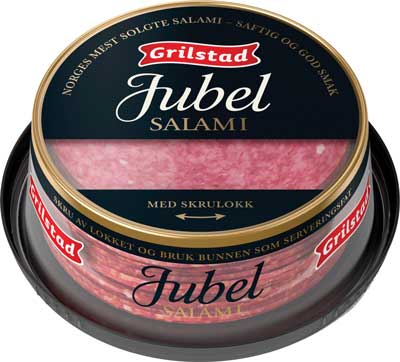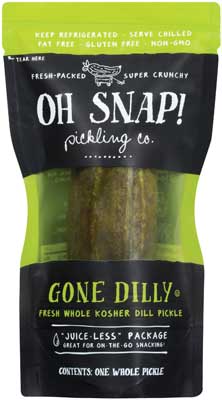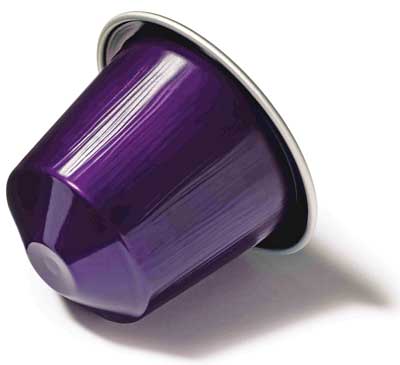Packaging That Sells
PACKAGING
The increasing variability in retail formats and retailer-led point-of differentiation presents challenges for food packaging. Sizes of retail stores can vary from the 2,000 sq ft of Tesco Express in the United Kingdom to Walmart stores in the United States that can be as big as 100,000 sq ft. This variation in store size means that sizes of packaged goods can also vary widely. Packages sold in club stores are specifically designed in large formats, but the retail formats in which standard food packages are sold vary greatly. While planograms for shelf layouts and an understanding of eye tracking help guide package design, the same food package design is often in different shelf environments. Fortunately, food packaging offers solutions for the increasingly variable and crowded retail environment.
Product Placement at Risk
Retailer initiatives on point-of-differentiation have left companies struggling to fit their brands into redefined unique sales positions. For example, Target’s recent switch to a three-tier system to highlight certain products that align with its signature image will impact brands not in alignment with Target’s newly defined unique sales position and point-of-differentiation. Brands not aligned with a store’s point-of-differentiation face the prospect of poor product placement such as point-of-sale (POS) displays and end caps at the end of store aisles being reduced by stores. POS displays have traditionally assisted in initial and seasonal product promotion with much success. POS reductions and bans illustrate the impact of POS on consumer purchasing. Impulse purchases within stores decreased 30% when cigarette POS displays in Australia were banned, and according to an article in Crain’s Chicago Business, Walmart’s reduction of POS and merchandising opportunities had a pronounced impact on products from Mondelēz International Inc., East Hanover, N.J. (www.mondelezinternational.com). POS and end-cap displays often increase retailer restocking labor and present consumer mobility space constraints.
With POS and product positioning at risk, food packaging needs to further innovate to build brand share. The package must garner attention in an intuitive manner to create an almost natural purchase decision. Innovations in package tactility (i.e., the capability of being felt or touched and the responsiveness to stimulation), shape, transparency, and sustainability have resulted in brand share shifts outside the food industry. A package’s tactility and shape, transparent packaging, emerging technologies, and recognizable sustainability are tools food packagers can use to address new retail challenges.
Tempting With Tactility and Shape
Research indicates that tactility communicates directly to the brain and that sensory receptors in the hands can sway buying decisions. Food packaging can rise to the challenge of attracting consumers in the changing retail marketplace by borrowing from other retail categories to connect with shoppers in a touchy-feely manner. The highly tactile hand-sized package of Sou Natura, a shampoo sold in Brazil, was showcased at Applied Market Information LLC’s 2015 Multilayer Packaging Film Conference. Its polyethylene/biaxially oriented polyamide/polyethylene terephthalate construction by Bemis, Neenah, Wis. (www.bemis.com), invites consumers in for a squeeze by displaying an inviting shelf appearance. Competing in a congested garden care category, Scott’s Nature’s Care (recipient of the American Graphic Design 2014 Award) has a similar tactile attraction, integrating a tube handle so consumers intuitively understand how to pick up the package. Sahale Snacks, Seattle, Wash. (www.sahalesnacks.com), displays vivid images of its snack food on a soft, surreal, dark background that entices consumers to take a closer look. These brands come to life by drawing consumers in to touch and feel packaging while their eyes take a break.
Shape creates drama on the shelf when merchandising options are limited. The MiniMod pouch by WestRock, Richmond, Va. (www.westrock.com), and Ampac, Cincinnati, Ohio (www.ampaconline.com), pulls consumers closer with the negative space around a spherical actuator. The tilted neck and body label and aligned glass shaping of the Tuborg, Copenhagen, Denmark (www.tuborg.com), beer bottle create an easy grip that invites consumers to pick it up. In addition, package groupings can attract consumers in a manner similar to POS and endcap displays. Aquafina FlavorSplash by PepsiCo, Chicago, Ill. (www.pepsico.com), in relaunched bottles creates drama and attractive hand-seeking shapes in a manner similar to the swirl-shaped packages of Proctor and Gamble’s Herbal Essence products that form a repetitive, approachable curve when shelved as a group. Technology was center stage in the development of a combined injection and blow-molded squeezable hand-sized polyethylene terephthalate (PET) bottle for the packaging of Ninho Fruti yogurt by Nestlé, Vevey, Switzerland (www.nestle.com), for the Latin America market. The strawberry shape of the primary package in a produce mesh bag and a produce-like display connects naturally to a shopper’s intuition on product benefits.
Clearly, It’s the Package that Sells
When it’s not viable for consumers to touch a product, transparent packaging and emerging packaging technologies build consumer trust and project the product’s merits. The Brita water pitcher is secured on a pedestal carton, and BlackWeb headphones protrude from the carton. Both packages enable interaction with the product in a manner similar to how it is used. Interestingly, the packaging for the Brita pitcher was inspired by sport-ball packaging that has a large open space enabling consumer contact. For many food products, touching the product before purchase is not viable, but smart packaging can be applied to project the idea of a product’s texture, smell, use, and merits. For example, when packages are next to each other on the shelf, consumers are greeted with a stanza of music showcasing Panasonic headphone packages formed into the shape of two notes on a white background within a clear PET cover.
 Food packages that are transparent and enable increased interaction sell well. Grilstad, Trondheim, Norway (www.grilstad.no), offers a view of what transparent packaging can do for sliced meat. Grilstad (recipient of a 2015 WorldStar Packaging award) engineered its package to be intuitively table-ready, using the SuperLock injection-molded polypropylene/ethylene vinyl alcohol twist-off lid by RPC Superfos, Winchester, Va. (www.superfos.com). Light-induced oxidation is an issue addressed by ultraviolet coatings and by connecting graphics to transparent sections of the package seamlessly. Where product protection requirements allow the use of cost-competitive translucent films, manufacturers exploit the opportunity to show their products, combining graphics with clear sections of packaging. The packaging for Mondelēz International’s Mayco and Express cracker brands demonstrate this trend.
Food packages that are transparent and enable increased interaction sell well. Grilstad, Trondheim, Norway (www.grilstad.no), offers a view of what transparent packaging can do for sliced meat. Grilstad (recipient of a 2015 WorldStar Packaging award) engineered its package to be intuitively table-ready, using the SuperLock injection-molded polypropylene/ethylene vinyl alcohol twist-off lid by RPC Superfos, Winchester, Va. (www.superfos.com). Light-induced oxidation is an issue addressed by ultraviolet coatings and by connecting graphics to transparent sections of the package seamlessly. Where product protection requirements allow the use of cost-competitive translucent films, manufacturers exploit the opportunity to show their products, combining graphics with clear sections of packaging. The packaging for Mondelēz International’s Mayco and Express cracker brands demonstrate this trend.
 As more and more fruits and vegetables are being packaged, consumers’ connection to freshness can be made with clear packaging. Co-polymer polypropylene reverse-printed biaxially oriented polypropylene stand-up pouches by Smart Container, Tijuana, Mexico (www.smartco.mx), allow high print accuracy that reduces print space and increases the amount of transparency. The result is a stand-up pouch with approximately 80% of the surface free of print for ample retail product viewing. Frozen Yogurt Shop by Kemps, St. Paul, Minn. (www.kemps.com), virtually transports consumers to a yogurt shop environment with its transparent packaging. In frozen food aisles, transparency is a clear way to connect consumers to products. SmartFare by WestRock is a refreshing move away from the rectangular wall of bricks consumers usually see in the refrigerated meals category. The bowl-shaped printable paperboard surface reduces the need for sleeves and allows for clear view of the product while matching the required 13-day shelf life of typical crystalline polyethylene terephthalate rectangular-sleeved trays. The packaging for Oh Snap! Pickling Co. by GLK Foods, Appleton, Wis. (www.glkfoods.com), features a tinted window on its two-ply high barrier hourglass stand-up pouch. Text and graphics on transparent packaging assist consumers with logical purchase decisions, and evolutions into new arenas such as smart packaging appeal to consumers’ purchasing instincts.
As more and more fruits and vegetables are being packaged, consumers’ connection to freshness can be made with clear packaging. Co-polymer polypropylene reverse-printed biaxially oriented polypropylene stand-up pouches by Smart Container, Tijuana, Mexico (www.smartco.mx), allow high print accuracy that reduces print space and increases the amount of transparency. The result is a stand-up pouch with approximately 80% of the surface free of print for ample retail product viewing. Frozen Yogurt Shop by Kemps, St. Paul, Minn. (www.kemps.com), virtually transports consumers to a yogurt shop environment with its transparent packaging. In frozen food aisles, transparency is a clear way to connect consumers to products. SmartFare by WestRock is a refreshing move away from the rectangular wall of bricks consumers usually see in the refrigerated meals category. The bowl-shaped printable paperboard surface reduces the need for sleeves and allows for clear view of the product while matching the required 13-day shelf life of typical crystalline polyethylene terephthalate rectangular-sleeved trays. The packaging for Oh Snap! Pickling Co. by GLK Foods, Appleton, Wis. (www.glkfoods.com), features a tinted window on its two-ply high barrier hourglass stand-up pouch. Text and graphics on transparent packaging assist consumers with logical purchase decisions, and evolutions into new arenas such as smart packaging appeal to consumers’ purchasing instincts.
Recognizable Sustainability Sells
Sustainable packaging that makes a recognizable direct connection to consumers increases sales. The three Rs of packaging—reduce, reuse, and recycle—have been replaced by a complex array of options, as highlighted in the June 2014 Food Technology article “Biobased but Not Biodegradable.” And options in sustainable packaging are expanding faster than expected. Aveda and Nestlé Purina Petcare Co. (SustPack’s 2015 Trashies award recipients) demonstrated how recognizably sustainable packaging can sway consumer purchasing. Aveda used bio-derived polyethylene from a sugarcane byproduct and post-consumer recycled polymers that connected easily with Aveda’s recycled-polymer initiative. More than 85% of Aveda’s packaging is now fully post-consumer recycled. Nestlé Purina Petcare Co., Jefferson, Wis. (www.purina.com), developed a jug and cap made from molded recycled fiber for its Purina ProPlan cat litter.
 Beverage packaging is an example of how the food industry tackles sustainability with technologies that are significant to consumers. In 2009 the Coca-Cola Co., Atlanta, Ga. (www.coca-colacompany.com), introduced the Plantbottle with 35% bio-derived PET but has since replaced it with a 100% bio-derived PET bottle. The Nestlé Nespresso fully recyclable aluminium coffee capsule is an easy connection to sustainability for consumers. And the three-year limit set by Carlsberg Group, Copenhagen, Denmark (www.carlsberggroup.com), and EcoXpac, Slangerup, Denmark (www.ecospac.dk), to develop the first fully biodegradable bottle demonstrates the time and commitment required for innovation on sustainability that provides an immediate connection to consumers.
Beverage packaging is an example of how the food industry tackles sustainability with technologies that are significant to consumers. In 2009 the Coca-Cola Co., Atlanta, Ga. (www.coca-colacompany.com), introduced the Plantbottle with 35% bio-derived PET but has since replaced it with a 100% bio-derived PET bottle. The Nestlé Nespresso fully recyclable aluminium coffee capsule is an easy connection to sustainability for consumers. And the three-year limit set by Carlsberg Group, Copenhagen, Denmark (www.carlsberggroup.com), and EcoXpac, Slangerup, Denmark (www.ecospac.dk), to develop the first fully biodegradable bottle demonstrates the time and commitment required for innovation on sustainability that provides an immediate connection to consumers.
With tempting tactility and shapes, transparent packaging, emerging technologies, and recognizable sustainability, packaging is ready to face new challenges.
 Claire Koelsch Sand, PhD, Contributing Editor
Claire Koelsch Sand, PhD, Contributing Editor
President, Packaging Technology & Research
Adjunct Professor, Michigan State Univ.
[email protected]
 Aaron L. Brody, PhD, CFS, Contributing Editor
Aaron L. Brody, PhD, CFS, Contributing Editor
President and CEO, Packaging/Brody Inc.,
Duluth, Ga., and Adjunct Professor, Univ. of Georgia
[email protected]
